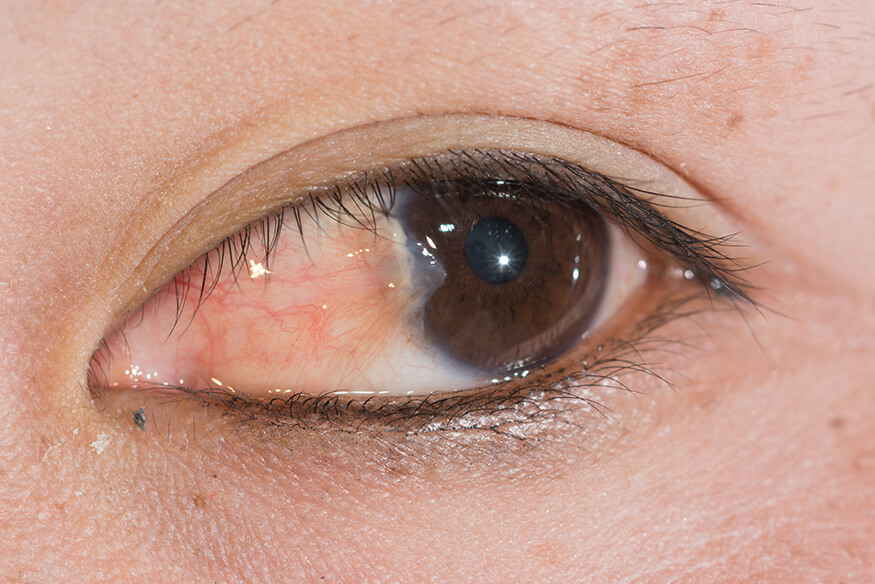Home » Pterygium Surgery
Pterygium Surgery
Change the Way You See the World
The eyes are the window to the soul. If you have problems with your eyes, it can feel like your soul itself is in turmoil. At Howerton Eye, we are ready and eager to help you treat your eye conditions and put your mind at ease. One condition that may affect your eyes is called a pterygium or “surfer’s eye.” If you are experiencing a pterygium, there are options for you. Reach out to Howerton Eye today at our Austin, Southwest Austin, or Kyle location to take the first step toward being pterygium-free!
What is a Pterygium?
A pterygium is a growth of pink, fleshy tissue that normally appears on the inner side of the eye (closest to the nose). Stretching across the white part of the eye, a pterygium often covers part of the cornea with a pinkish tissue. When this happens, your vision may be impaired. Pterygiums can be the result of having dry eyes or overexposure to wind, dust, and ultraviolet (UV) light from the sun.
What Are Pterygium Symptoms?
Symptoms of a pterygium may range from mild to severe and include the following:
- Blurry vision
- Dry, burning and itchy eyes
- Sensation like grit or sand is stuck in your eye
- Swelling and redness in the conjunctiva (surface of the eye), especially in early stages of the pterygium.
With everything you have to do in your busy day, the last thing you should have to worry about is being able to see things clearly. With locations in Austin, Southwest Austin, and Kyle, TX, the eye doctors of Howerton Eye are ready to serve you. Contact us today to get that pterygium out and put the twinkle back in your eye!
Request an AppointmentHow is a Pterygium Treated?
If one of our expert eye doctors at Howerton Eye diagnoses you with a pterygium, a minimally invasive surgery is required to remove the fleshy growth from the cornea and sclera (the white part of the eye). Prior to the procedure, you will receive light sedation to make sure you are comfortable while an eye doctor numbs your eye. Though you will be mindful of your surroundings, you will not be able to see anything.
After removing the pterygium, your eye doctor will place a tissue graft in the area to prevent recurrence. The graft is typically secured using tissue glue. No sutures are required. Because of the sedation, you will not be able to drive immediately after the procedure. You may experience grogginess, and you will be prescribed pain medicine to take as needed. To learn about how your pterygium procedure can be financed, check our Financing and Insurance page for more information.
Recovery
You can expect a pterygium surgery to have a speedy recovery window. After only two days, you should be able to go back to work with corrected vision. A week after your pterygium surgery, the tissue glue used to secure the graft will dissolve. It will take about two to four weeks total for the redness and irritation to gradually subside. So there’s no need to delay. The sooner you contact Howerton Eye, the sooner you will be on the road to recovery, pterygium-free!



